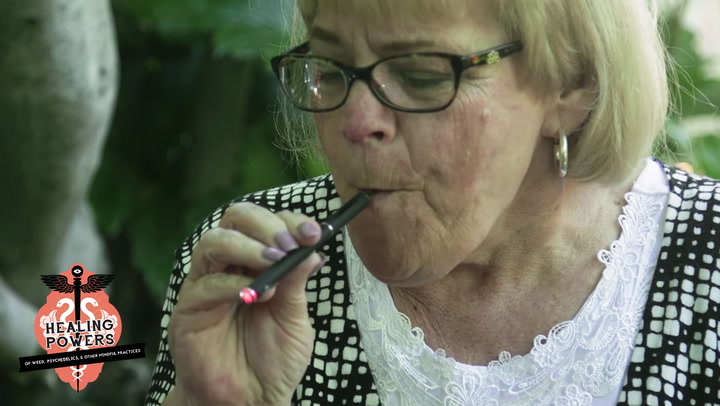For a generation of observers, thinking about marijuana would conjure images of couch-sitting stoners covered in Cheetos dust re-watching Up in Smoke for the ninth time in week.
These so-called "stoners" were thought to be unmotivated, jobless slackers with no serious goals in life and even less to show for the efforts that they had already put forward.
Fast forward to 2016, and things look much different. States around the country are spearheading their own initiatives to legalize medical and recreational cannabis. The federal government has even jumped on the bandwagon, signaling its likelihood of rescheduling cannabis as a Schedule I drug by this summer. And the green rush has brought forth a cascade of profitable businesses, from cannabis distribution to paraphernalia sales to the sprouting of specialized lobbying and consulting practices. In short, the cannabis realm these days is occupied by very serious people, academics and businesspeople alike.
Seldom has this change been more apparent than at New York City’s Cannabis Science & Policy Summit, held days before 420.
The conference provided not only a forum to discuss the various policy conundrums facing the cannabis industry as it lurches into the mainstream; it also served as a microcosm for both the successes and failures of the cannabis legalization movement as a whole.
Major Policy Focuses:
Should cannabis be compared to alcohol or medicines?
While dozens of cannabis-related issues were discussed at the summit, one of the most prevalent was the question of how to think about cannabis going forward: Should policy-makers and enforcement officials think of it as a vice, such as alcohol, and regulate it as such? Or should it be treated and regulated more like a medicine? It is a vexing question that yielded multiple answers from panelists over the course of the two-day gathering.
The thought of treating cannabis like alcohol was not a popular one among many of the summit’s speakers. Kevin Sabet, the director of the Drug Policy Institute and Assistant Professor at the University of Florida’s College of Medicine, who was also a panelist at the summit, bemoaned the treatment of cannabis like alcohol, stressing his opposition to cannabis on public-safety grounds.
“This thing about, ‘Let’s treat it like alcohol’—we all agree that alcohol is a disaster,” Sabet told MERRY JANE.
“So, let’s treat pot the way we think that other thing that’s so much worse is? It doesn’t make sense. It’s like saying, ‘Let’s jump off the third floor of a building instead of the sixth floor—maybe it’s better, but it’s still dangerous.”
Others think that the easiest route would be to just combine the current dichotomy into one single entity. According to Miles Light of the Marijuana Policy Group, doing so would simplify the system and lead to greater state revenues.
“Colorado is losing substantial tax revenues because almost 50% of buyers choose the medical route,” Light told MERRY JANE.
“Washington’s new model is much better, where MJ pain-relief can be sold over the counter, and where true medical needs are available by application.
While opinions were divided on the issue, a consensus among many panelists was that cannabis policy—and the thinking around it—should and would move beyond the rigid thinking of legalization versus prohibition. According to Prof. Mark Kleiman, Professor of Public Policy at NYU’s Marron Institute of Urban Management and a principal organizer of the summit, the increasingly-complicated landscape requires a broadening of thought amongst policymakers and consumers alike.
“There are lots of varieties of prohibition, there are lots of varieties of legalization,” he told MERRY JANE.
“There is no reason to believe that all the prohibitions are better or worse than all the legalization. There is no reason to believe that the right prohibition or the right legalization is the same in every jurisdiction. There are multiple dimensions of outcome we should care about, and it requires careful policy analysis.”
Creeping presence of big industry
The issue of big-business encroachment into the cannabis industry was also a hot topic of discussion at the summit. Many of the panelists agreed that cannabis consumption can be detrimental to the health of many of its users, particularly if the substance is consumed by those with psychiatric or other ailments. Prof. Kleiman in particular was concerned about the divergent interests between the public and private sectors, saying that the two were almost diametrically opposed in their focuses.
“Cannabis use disorder is real, it’s rising and it’s likely to be price-sensitive,” he said. “People with it account for a very large bulk of the revenue of the industry. Therefore, if you set up a for-profit industry to sell cannabis, the commercial interest is precisely the opposite of the public interest. The public is, in my view…in access for adults for moderate use.
“The commercial interest is in selling as much of this shit as we can, which means generating and sustaining as many heavy users as we can. So, I say that their interests and our interests are opposite.”
One issue that received attention regarding industry encroachment was that of pesticides. Federal scheduling of cannabis as a Schedule I drug has meant a dearth of federal guidance on the issue, and state regulatory apparatuses appear ill-equipped to handle the many pesticides often used by larger industry players to grow cannabis. As such, policy analysts are divided on how to address the problem in a way that balances public health and the nurturing of business growth.
The pesticides issue has caught the attention of top policymakers and analysts, for both its effects on public health and the threat it poses to the burgeoning cannabis business. Peter Holmes, the City Attorney for the city of Seattle, Washington, told MERRY JANE of the “chilling effect” that pesticides could bring to bear on the state’s cannabis industry.
“I’m personally putting pressure on the [Washington state] Liquor & Cannabis Board to adopt regs and make sure that it’s a good state-run system. If they can’t get that together soon enough, then the industry’s going to need to do it, or they’re going to kill things like marijuana tourism,” Holmes said.
States like Colorado and Washington need to be up-front about not knowing whether the state’s licensed manufacturers are producing a pure product, he continued. A continued prevalence of pesticides in licensed products could give rise to a black market claiming a purity of their product—regardless of whether that’s true—and deter future cannabis enthusiasts from coming to the state.
Yet, while the use of pesticides is a concerning issue, there is also an argument that businesses are not necessarily to blame. After all, businesses of any kind are expected to test the boundaries of how best to maximize their profits, and, as the thinking goes, the area of cannabis is no different.
“I don’t blame the industry, that’s what they do,” says Sabet. “That’s the point of being in an industry—you have to keep your shareholders happy and the boss happy, and you’ve got to make money. That’s the whole point. I actually blame more the political system and the ignorance of the voters, of thinking here could be a way to do this in a way that would reduce industries acting the way they are, but of course you can’t.”
Lack of Diversity
Another frequent topic of discussion at the summit was the lack of diversity both within the industry and at the summit. Much like the higher echelons of cannabis’s academic and business spheres at large, an observer at the summit could not help but notice that the majority of panelists and attendance tended to be white, male, middle-aged, and on the higher end of the income spectrum. Thus the question arises of how an average cannabis user—younger, and thus probably less likely to receive a substantial income—can expect to have their interests and concerns truly represented by people who look almost nothing like them in any way.
Rather than shirk from this reality, however, panelists openly discussed the issue and potential causes. There was even an entire panel devoted to a subset of the issue, titled “Cannabis Legalization & Racial Inequality.”
“”It’s a very real issue, and it’s a thing that we absolutely should be taking about, and the industry needs to become more diverse,” says Jeremy Ziskind, the Director of Projects & Marketing at BOTEC Analysis, a research and consulting firm, and one of the organizers of the summit.
“We really have done a serious effort to try to include as many minority voices as possible. It’s not perfect, and that’s just kind of a reflection of where the industry is right now.”
One prevailing explanation for the underrepresentation of certain groups, particularly those in lower economic standing, is that those people are less likely to have a significant background in academic research on the issue. As a result, according to Prof. Kleiman, those people are less likely to be present at academic conferences such as this one.
“Are they physically present? In this case, no. If someone would be willing to write us a check to support this conference, then we would have had a different price point. But it is generally true that high school dropouts who are heavy cannabis users don’t publish a lot of scientific papers, and therefore don’t wind up at conferences. Were their interests being spoken for? I think they were.”
But what about the role of women? Statistics in recent years have shown that women are both more likely than men to graduate from college, and have made progress in recent decades as far as representation in higher education. And yet, of the 90 speakers on the summit’s scheduled lineup, only 24 were women.
According to Sandra Mullins, Washington state’s Senior Policy Advisor on Public Safety & Government Operations, told MERRY JANE that while women are gaining representation in these sorts of academic settings, there remains a set way that the public at large thinks about the roles of women.
“I do a lot of public-safety panels, and it’s the same thing happening, where you have a lot of women innovators and advisors and thought leaders, and it’s still a very male-dominated [world.] If I went to a Social Services, it would be very different. The types of things that I go to that are more about addiction treatments, and more about the public health phenomenon, you see much more women. I think it’s just where we lead girls to operate in the world.”
She added, “If women are there as sort of defenders of children’s health and defenders of women’s health and the protectors of society, they’re much more acceptable than someone who is coming in and saying, ‘I want to figure out how to write a marijuana policy.’”











